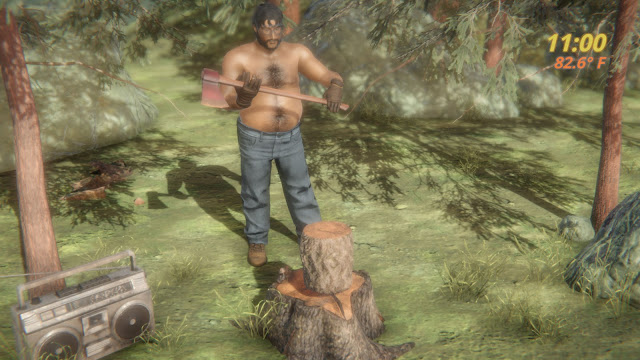 |
| old WIP production still from an early version of The Tearoom |
I want to talk a bit about the formal design constraints in my gay sex games -- I don't usually emphasize this aspect of my work because it's a very game developer-y thing to care about, but sometimes I guess a little bit of shop-talk is called for:
A lot of my games have been what I'd call short form "one room" games, where I constrain the scope of the game to one room or one small area. When I first started doing
Radiator 1 ("Polaris") in 2009, that constraint emerged from my frustration with working on a large international group project like
Black Mesa Source, where I wasn't sure if we were ever going to finish and release anything. I wondered, could I work alone, and quickly make a short experience in a small room?
Cut to today in 2017. I've just finished and released
The Tearoom, a game that takes place in one single public bathroom. Because it was so small and controlled, I could focus on the interactions and production value very tightly, and produce something with relatively high fidelity and density even though I was working mostly alone. (But it still took me like 8-9 months of part-time work to do all that! Maybe the room should've been even smaller?)
But I also don't exist in a vacuum, cut-off from the rest of video game culture. Maybe my attitude is also a reaction against the rise / dominance / golden age of open world games and walking simulator-type hiking games today? I know other designers counter AAA hegemony in different ways, like how Firewatch adopted a non-photorealistic illustrative art style, or how
The Signal From Tolva focused on a somewhat sparse rocky-chunky-sculpted look. Both games feature large open world environments that differentiate themselves with talented art direction that also helped them scope better too.
However, I'm not really a good art director, and I still feel really tied to realism for political reasons, so I guess I have to differentiate my creative strategy in a different way... I specifically set my games in small man-made domestic spaces instead of trying to build huge sweeping landscapes. And even if I did attempt to build a huge landscape, my shabby default Unity 2 tri indie grass will never be able to compare with
photoreal translucent Unreal grass, or Breath of the Wild's lush Miyazaki grass, so maybe that's why I don't bother. As much as I enjoy and admire all these grass games, I recognize that it's out of my wheelhouse and capability. Instead of trying to build a giant grassy forest landscape, I can rest with a decently crafted urinal and lean on that.
It might seem like I'm boxing myself in, and maybe I am, but honestly it doesn't feel that onerous to me. Grass is nice, but perhaps there's enough people making grass games already. I'm not sure if I have anything new or interesting to say about grass or trees anyway. (But who knows? Coming in 2018: gay trees)
By constraining the physical-geographical space, I think that helps me explore a wider conceptual-cultural space. One room doesn't just mean one idea? Or if it does, then for now, I think I'd rather make 5 one room games than 1 five room game, or 0.271 forest games.


















